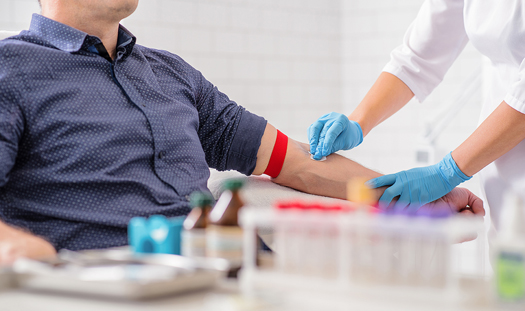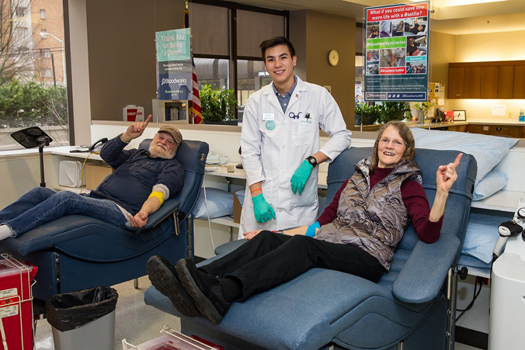Bloodworks: Bettering our Community in So Many Ways

When there is an emergency, often the first community request is for blood donations; however, blood donations are always needed to save lives and donation drives occur nearly every day. Did you know that each time you donate, your donation is separated into red cells, platelets, and plasma, and can potentially save three lives?
I work in the Seattle Municipal Tower, where Bloodworks Northwest schedules blood drives every eight to nine weeks. Each blood drive in our building collects an average of 55 units—potentially saving the lives of 165 people!
Bloodworks Northwest is a nonprofit community blood center and medical research institute headquartered in Seattle that serves 90 hospitals in western Washington and Oregon. Bloodworks was founded in 1944 when visionary Seattle leaders joined together to create an organization to support their friends and neighbors in a time of need. Known then as the King County Central Blood Bank, the organization originally served hospitals in Seattle and King County and eventually expanded to support patients in Kitsap, Whatcom, Skagit, Mason, Thurston, Jefferson, and Clallam counties.
To better reflect its growing geography, the organization was renamed Puget Sound Blood Center in 1974. In 1991, its reach was further expanded through merger with the Snohomish-Island Counties Blood Bank. In 2015, it adopted the name Bloodworks Northwest to better capture the scope and reach of its healthcare services. Today the organization is getting ready to celebrate 75 years of service. Read more about Bloodworks’ history here.
I started donating blood in the 1970s, and I became a volunteer caller. So much has changed since then—paper lists have been replaced with digital notifications, and a dozen permanent donation centers and multiple mobile blood drives every day make donating easy.
The Bloodworks Northwest website says “Bettering our community, drop by drop.” This is accomplished in many ways. During a blood donation in February, I was fortunate to meet Cecily Nagel, the donor resources representative for downtown Seattle, West Queen Anne, and Magnolia. Cecily and I talked about Age Friendly Seattle—an initiative to make Seattle a great place to grow up and grow old—and how volunteering and supporting Bloodworks are examples of the age-friendly domains of social participation and civic participation.
Whether you are a regular donor, a first-time donor, or a volunteer, Bloodworks offers opportunities to help your community, meet new people, and make great connections, and—most importantly—save lives!
To donate blood, visit www.bloodworksnw.org/donate. To join the volunteer team, contact volunteer manager Effie Kuntz (206-422-2125 or effiek@BloodworksNW.org).
Contributor Mary Pat O’Leary, RN is a planner at Aging and Disability Services, the Area Agency on Aging for Seattle-King County.
![AgeWise King County [logo]](https://www.agewisekingcounty.org/wp-content/themes/agewisekingcounty/images/logo.png)

